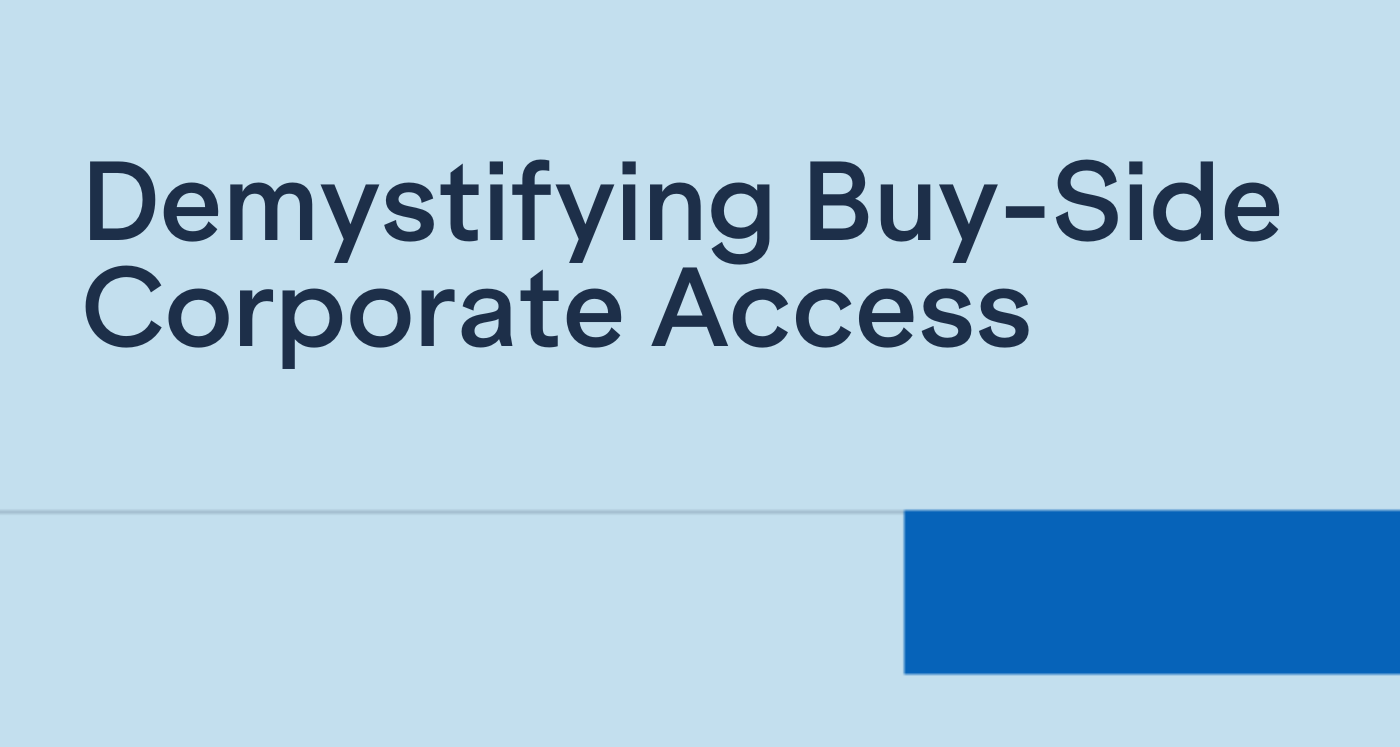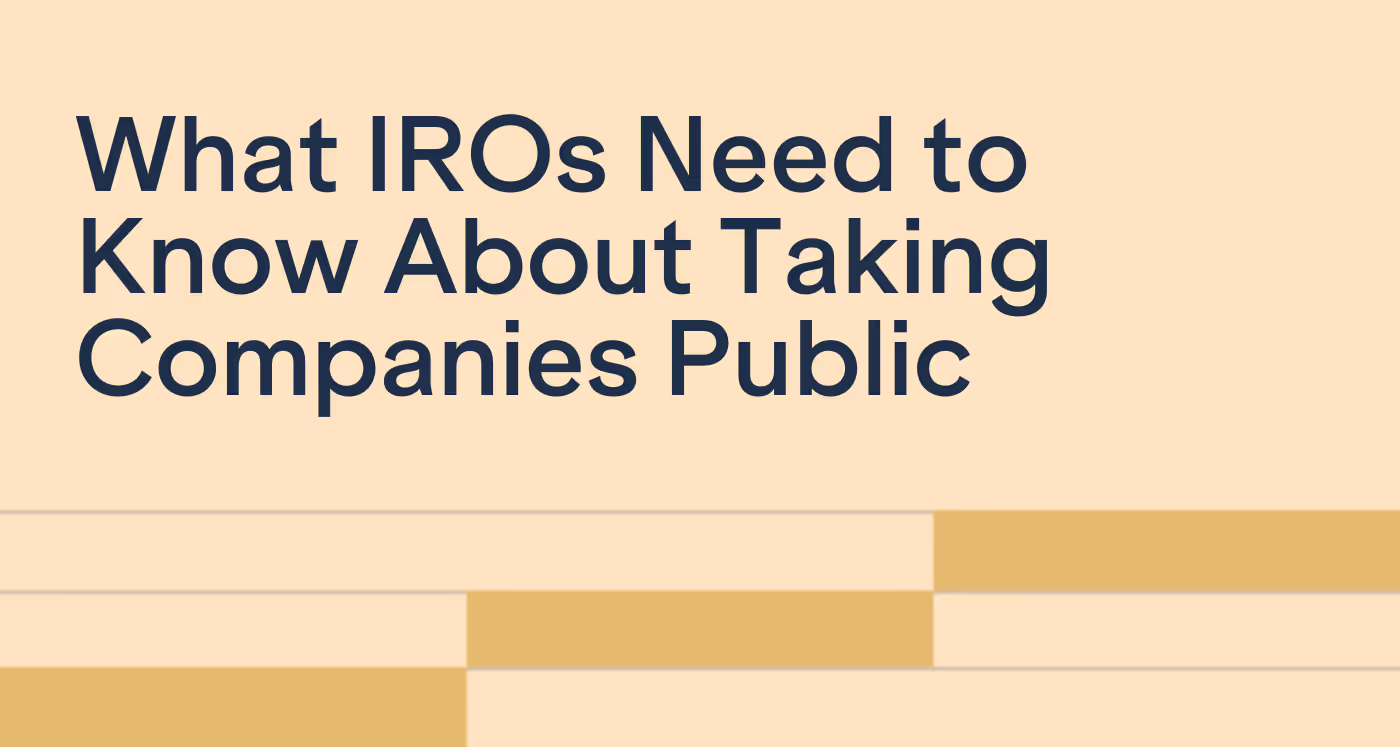
How to Build Effective Investor Targeting and Outreach Strategies for Small-Mid-Cap Companies
Learn how seasoned IR veterans are executing targeting strategies for small-mid-cap companies.

Many investor relations professionals rely on a cold email to introduce themselves to new contacts on the buy-side. Because email is the expected, and often preferred method of introduction for fund managers, it’s important to differentiate yourself from the noise by targeting the appropriate individuals and crafting a compelling message.
There are many things you can do to improve your chances of setting up a meeting. Keep on reading to learn about:
Be sure to read until the end so you can download Irwin’s tried and tested sample email to investors.
Irwin recently conducted a survey of buy-side professionals that gave us insight and recommendations from investors on how to communicate, engage, and win the attention of the buy-side. Because of this survey, we were able to learn that the majority of respondents would prefer to be contacted by email rather than by a phone call. With over 42.1% of buy-side respondents indicating a preference for email and another 15.7% with no preference, sending a preliminary email is an obvious first step.
That being said, sending a single email is not enough to build a positive relationship with prospective investors. In addition to email correspondence, phone calls and in-person encounters at industry events, and eventually meetings and roadshows are also essential parts of building relationships with investors.

The most difficult part of the investor outreach process is finding suitable investors to begin with. To do this, IROs should consider adding investor targeting tools that provide comprehensive and differentiated data to their tech stack. Ideally, you should have an up-to-date investor email database that provides the contact information for various investors in your industry, and tracks your interactions with those investors so you always have context on your relationship with them.
For example, Irwin’s constantly expanding investor database includes hundreds of thousands contacts plus coverage details about the industries they’re invested in. Users can search potential investors by location, industry and geographical focus, market cap, style, and various other critical factors.
A good place to start would be to make an email list of investors who hold positions with your peers and competitors. This strategy gives you leverage to use in your email, as you already know that the investor has a stake in your sector.
Learn more about The Art and Science of Investor Targeting
Learn more about How to Determine Your Ideal Investor Type
You only get one chance to make a first impression, so you want to be sure your introductory email hits all the right notes. A strong investor outreach email should have the following qualities:
While investors may be open to cold outreach, it’s important to be able to cut through the noise. The most effective way to do this is to ensure that your email has a compelling subject line. You want investors to see the subject and be curious to learn more about what you have to offer. It’s important to avoid vague or unprofessional subject lines in favor of descriptive and compelling information.
Here are some examples of what NOT to do:
On the other hand, here are some examples of strong subject lines that lead with value:
Do you notice what the last two subject lines have in common? They both include compelling information right off the bat. Including numbers is a great way to stand out in your desired recipients inbox. Additionally, these stats also demonstrate the value in your company and help the investor gain some context about your outreach.
The body of your email should be short and to the point. Remember, a cold email is an opportunity to set up further discussion, so it isn’t necessary to include a full company pitch. Your email should clearly state who you are, what the investment opportunity is, and include a call-to-action for next steps. If you like, you can also include a hyperlink to your company’s corporate presentation or a one-pager with some key figures.
A cold email should clearly articulate how your company will make the desired investor money, and include context, reasoning, as well as key data that supports your proposition. Some examples of this include positive catalysts in your industry or sharing metrics such as growth rate, EBITDA, acquisitions, or macroeconomic factors.
If you’re undervalued in comparison to your peers, you may wish to show metrics that explain why that is, and what the company plans to do in order to close that valuation gap.
Click here to download our free cold email template!
Even if you’re sending emails in bulk, you should be sure that each one is customized to a specific recipient. This includes basic customizations such as the recipient’s name and firm, but a cold email should also show how the company is aligned with their investment style. When targeting investors, look for those who invest in a similar market cap, sector, or geographic area as your company. Be sure to know whether their investment style is focused on growth, value, or yield and highlight your company’s alignment accordingly.
Furthermore, you should check if you have any mutual relationships with your target investor. This includes connections with past colleagues or perhaps a shared former employer. Don’t be afraid to name drop or mention any other pertinent information that could pique the investor’s interest.
After making a case that your company could be a profitable investment, you want to take control of next steps with a clear and compelling call-to-action. This could include:
Your goal is to make the desired investor’s life as simple as possible, so avoid making them book time to discuss the opportunity. Instead, ask about their availability and set up the appointment for them. The following is an example of a good call-to-action:
“Are you available for a 30 minute introductory call with our CEO in the next week or two? If you could provide a few times that work for you I can send over an invite”
This call-to-action clearly states what is being asked (a 30 minute phone call), a realistic timeframe (within two weeks), and what’s needed to get started (a suitable date and time).
If after a few days you don’t see a response from your prospect, don’t assume that it’s an automatic rejection. It’s likely that the investor is busy and hasn’t had a chance to respond. If you think there’s a strong fit, don’t be afraid to follow up. Another email is fine, but you may also want to try giving them a call in case that’s their preferred method of communication. Every investor is different, so don’t be afraid to experiment to see what works for different individuals (and make a note of their preferences in your IR CRM).
We examined a sample of 500 outbound campaigns beginning with a cold email. A single cold email had an average response rate of 2%, but that number increased to 18% when there were up to four follow up emails. When four phone calls were added to the cadence, which totalled eight touchpoints over a four week period, the response rate shot up to 42%. This demonstrates how a well-timed follow up can make or break your chances of meeting an investor.
However, remember that while persistence is important, you should avoid spamming potential investors. Wait a few days between follow up messages to increase the likelihood of getting a response.
When it comes to IR, email is king. A well written cold email to investors will go a long way in your fundraising strategy.
Download Irwin’s sample email to investors in our full Guide to Writing a Successful Investor Email or use the tips in this article to write your cold introduction email to investors.
Learn how to write compelling investor emails

Learn how seasoned IR veterans are executing targeting strategies for small-mid-cap companies.

Elizabeth Librizzi breaks down the secrets of buy-side corporate access to help investor relations professionals utilize buy-side firms.

What IROs Need to Know About Taking Companies Public: Insights from award winning investor relations thought leader Catherine Buan.